Top 5 Skype Alternatives in 2021
While there are many reasons to use Skype, there are a plethora of other options out there. Skype for Business has been decommissioned, and the platform as a whole has seen a decrease in popularity.
Web conferencing has become a bigger part of business and personal use in the last year. For many, video-based long-distance communication is now essential. A large number of options give you the opportunity to pick a web conferencing software that best fits your needs. Understanding how they compare, both to skype and each other, can help you make this choice.
For those looking for a more visual comparison of skype alternatives, check out our video on the Top 5 Skype Alternatives below.
Web Conferencing and Skype Alternatives
The benefits of web conferencing are well documented. For larger organizations, it can reduce travel time and costs. For smaller ones, it can save vital office resources. It increases the flexibility of working options for organizations of all sizes. It can even expand the pool of available talent you can draw from.
Despite these reasons, all web conferencing solutions are not created equal. For business users, Skype has a serious issue.
Skype for Business has been completely turned off as of July 31st, 2021. For many, this will mean finding a new tool for something they vitally need. Others may find themselves looking for alternatives for any number of reasons, including for new users. This has largely been replaced by Microsoft Teams,
The software compared in this piece are
5 Skype Alternatives
Below are the best alternatives for skype for any use case. Each has strengths and drawbacks, and one is sure to be the right choice for you.
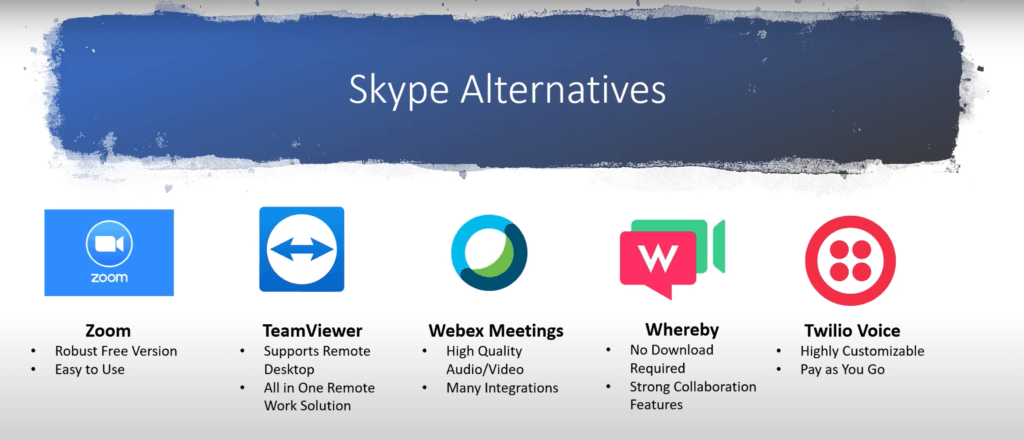
Zoom
First off has to be the software that has entered the collective vernacular in the last year. The amount many of us used this software has given it a sense of familiarity. With that said, it is a fantastic alternative to skype for both personal and professional use.
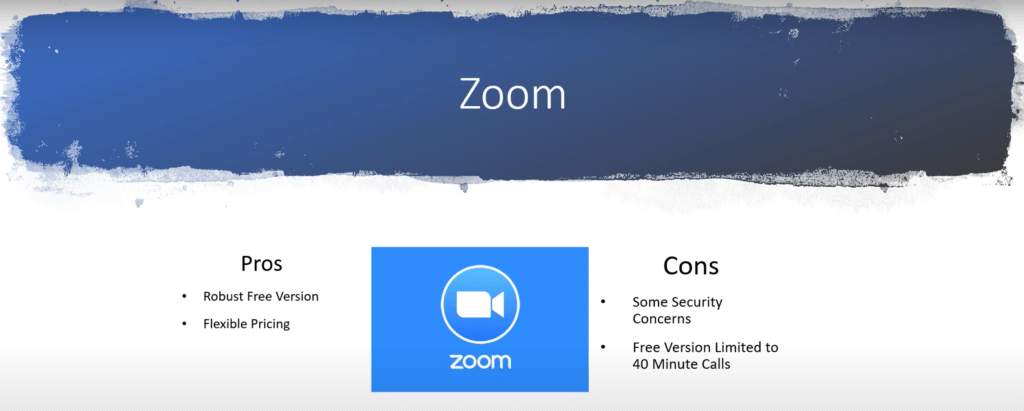
Zoom is reliable, and has a comprehensive free version that will be enough for many use cases. The free plan allows for up to 100 participants. These meetings can be held for up to 40 mins at a time. You will have access to unlimited 1×1 meetings.
This software is ideal for check-ins, product demos, and meetings with customers. You can send someone an invite, and they do not need to download anything to participate. This is particularly useful for those with less advanced tech skills. If you are planning to use this to keep in touch with members of the family, the ease of use may be vital for older individuals.
The business plans are relatively affordable, ranging from $150 to $240 dollars. These offer longer meeting times, social media streaming, and other benefits. Meeting recording will automatically save video and audio files to your device.
Some users have expressed concerns about security and privacy. For this reason, those dealing with extremely sensitive information may want to look elsewhere.
Finally, this allows users to easily join in on the go. The mobile app works well for iOS and Android devices. Users can also simply dial in, should they want to avoid an app. This will allow for only audio.
In summary, Zoom is a comprehensive, robust web conferencing tool that will work for many people. As a jack of all all trades, this is a great choice for personal and business use. If your meetings are under 40 mins, you will probably get away with the free version. Those who need more features will find the pricing competitive and scalable for their needs.
TeamViewer
A software you may not associate with web conferencing, TeamViewer can provide an all-in-one remote work solution. This vendor also offers Bliz, a standalone video conferencing software. If this is all you are going to use, it may be best to look elsewhere. Where this software shines is in offering remote desktop and screen sharing software.
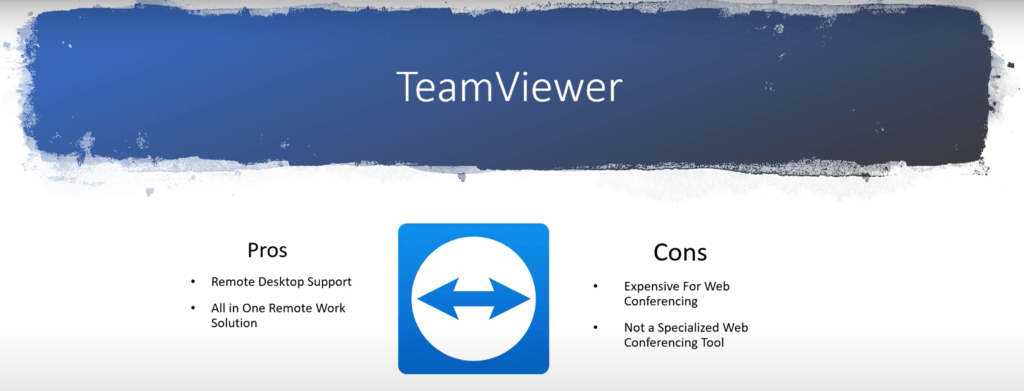
TeamViewer does not allow users to dial in, like Zoom offers. This can be limiting to those with poor internet, those on the drive who want to listen in, or other more remote use-cases.
The baseline multi-user plan allows for up to 15 licensed users across up to 300 devices. Meetings are limited to 10 users. For many organizations, the next tier will be needed. This allows up to 30 users. This makes it entirely unsuitable for webinars and company-wide meetings
TeamViewer allows for the sort of remote access that other video conferencing tools do not. If you intend to use your software for IT and remote team management, this may be useful for you. HR and IT departments will appreciate the ability to directly take control of devices from anywhere with a strong internet connection. Anyone who has ever tried to help someone fix something over the phone will appreciate the helpfulness of this feature.
In summary, as a pure web conferencing software, for most users there will be better alternatives. This product shines in its niche as a remote-work one stop solution.
WebEx Meetings
This software provides a fantastic option to those who want to spice up virtual presentations. WebEx Meetings offers a whiteboard system to allow you draw instantly viewable content for the meeting participants. The students of the world will appreciate this visibility, making it a strong contender for elearning and lectures.
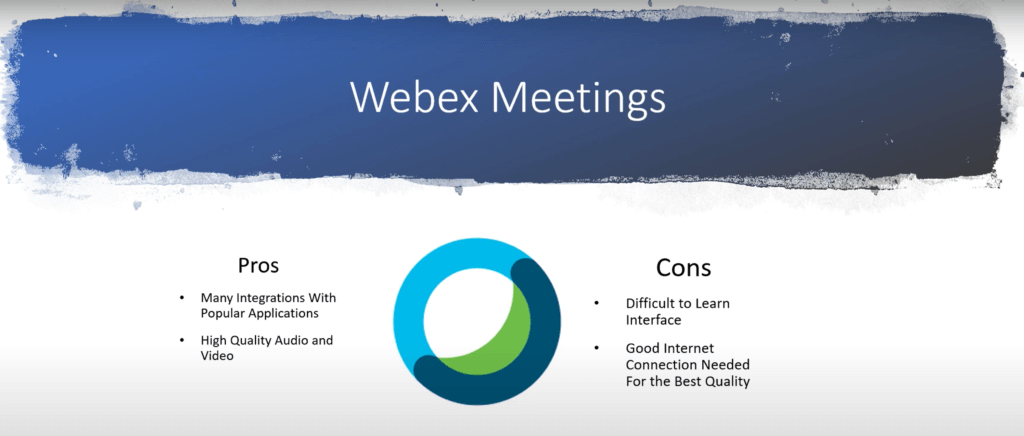
WebEx supports up to 200 people, with functionality like instant messaging to improve user experience. The tool is well suited to organizations that frequently give presentations to larger groups. Sales teams and those who collaborate frequently will find this a great tool for sharing ideas with others in their organization.
This business focus comes through in other features of the software. Integration with software like Salesforce and Canvas demonstrates even further the professional focus of WebEx.
Educational organizations will find that many of these tools work well for their use case. The huge number of integrations and demonstration-focused platform work well for a school environment. In summary, WebEx is fantastic for explanations and concept-sharing, more so than simple interpersonal meetings.
WebEx users praise the high video and audio quality as well. This further helps in getting complex ideas across while minimizing the issues that can come with distance.
The downside of this feature is that this can require very strong internet connections. This can be less effective in places without strong internet connections.
It can be extremely frustrating to share blurry presentations when the recipient must follow along in real-time. WebEx works to avoid this, so long as you have the internet speed to make it work.
Those in urban areas with better connectivity infrastructure will find WebEx to be a better choice. Users also have said the interface is trickier to learn than some of the competition.
Whereby
This is a fantastic tool for small team collaboration. The software integrates well with GSuite, allowing users to edit items during the meetings. Those working on slideshows, co-writing documents, and going over spreadsheets will appreciate these features.
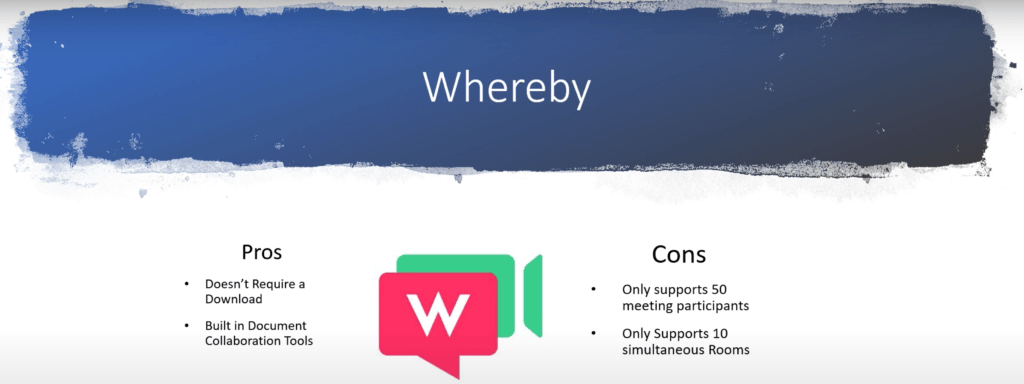
Whereby is an easy-to-use tool. It is well suited to those who may need more collaboration features, but who do not have as much tech experience. The software is web-based, requiring no installation to use. This is true for those organizing the meeting and those participating.
The software does only support up to 50 people per meeting. Those looking for a larger meeting software, or to share ideas organization-wide, may find this limiting. Where this tool shines is in small-team collaboration situations. In summary, Whereby may be a great tool for individual departments and smaller organizations to improve the efficiency of remote teams working together. Consider a different choice for larger or more education-based meetings.
Twilio Voice
Twilio Voice is a communication platform for online messaging, video conferencing and more. It is entirely cloud-based. This is one of the most customizable options available, and the payment system is pay-as-you-go.
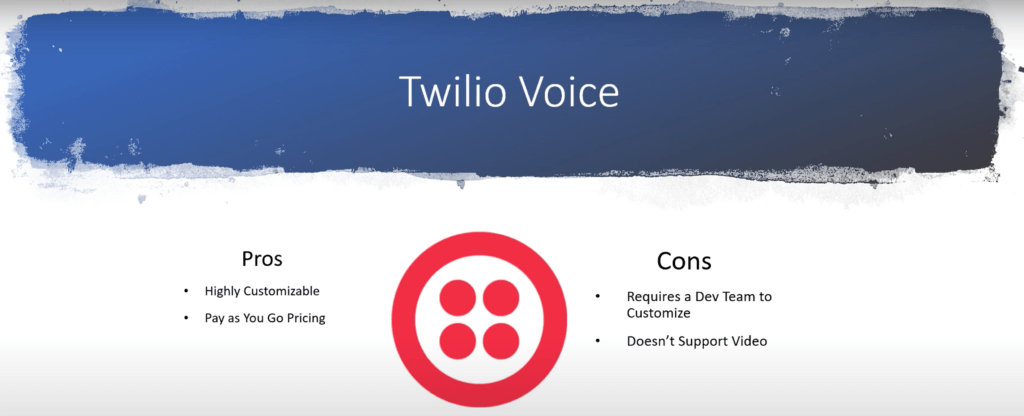
Twilio is made with a developer focus for its target audience. You can set up systems to mask phone numbers, engage in call tracking, and generate contact lists. The pay-as-you-go model is ideal for those who will see the amount it is used vary wildly.
The big red flag here is in the name: voice. This software does not support video web conferencing. While it is comprehensive in its support for various types of audio communication, this may be a deal-breaker for some.
In summary, Twilio is for those who want the communication aspect of web conferencing. The system is customizable in a way the others on this list are not. It has its clear niche, and you will likely know if this is the right choice for you very quickly.
More Web Conferencing and Webinar Options
For those looking for more webinar and web conferencing options, we have plenty of resources available. Check out the web conferencing category page. Here you will find a list of the top-rated products. You can read reviews from users like you, and see the pros and cons of each.
If you are wondering about webinar and web conferencing, check out this piece, on The Difference Between Webinar And Web Conferencing Software.
Was this helpful?

Check out all the Web Conferencing Software options available!
